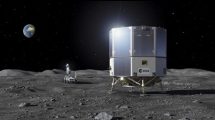 Planet Labs PBC, a provider of daily data and insights about Earth, has announced the successful completion of a significant technical milestone for its planned satellite-to-satellite communications links under the NASA Communications Services Project (CSP).
Planet Labs PBC, a provider of daily data and insights about Earth, has announced the successful completion of a significant technical milestone for its planned satellite-to-satellite communications links under the NASA Communications Services Project (CSP).
Planet was selected as a subcontractor by SES Space & Defense and Telesat Government Solutions in late 2022 to demonstrate real-time space-to-space connectivity solutions from Lower Earth Orbit (LEO) satellites to other in-space communication satellites operated by SES and Telesat.
Planet and SES Space & Defense conducted the first ground demonstration in late August from a flight-like user terminal housed in Mountain View, CA, and SES’ NSS-9 GEO satellite. Planet used in-house designed flight representative radios, custom spread spectrum waveforms, omni, and directional antennas for this demonstration.
The successful demonstration validates the radio and antenna design, link margin, data rates, and latency, serving as a first step in technology maturation toward offering a real-time connectivity solution with Planet’s LEO satellites. This capability seeks to provide an enhanced offering for Planet customers whose mission benefits from highly responsive last-minute tasking capabilities. Planet’s RTcomms is persistent, ubiquitous, near-real, low data rate inter-satellite link using global GEO C-band beams. RTcomms’ time-highly spread waveform allows operation well within the normal off-axis and spectral power density requirements for geostationary communications systems. The antenna pattern’s orbital altitude, low power density, and directional nature ensure no discernable interference with ground systems. The waveform is robust to interference from other C-band satellites, enabling reliable operation over any world.
“This ground demonstration campaign is a major step forward in Planet’s plans to continue providing the most timely insights possible to our customers,” said Kiruthika Devaraj, VP of Avionics and Spacecraft at Planet.












Add Comment